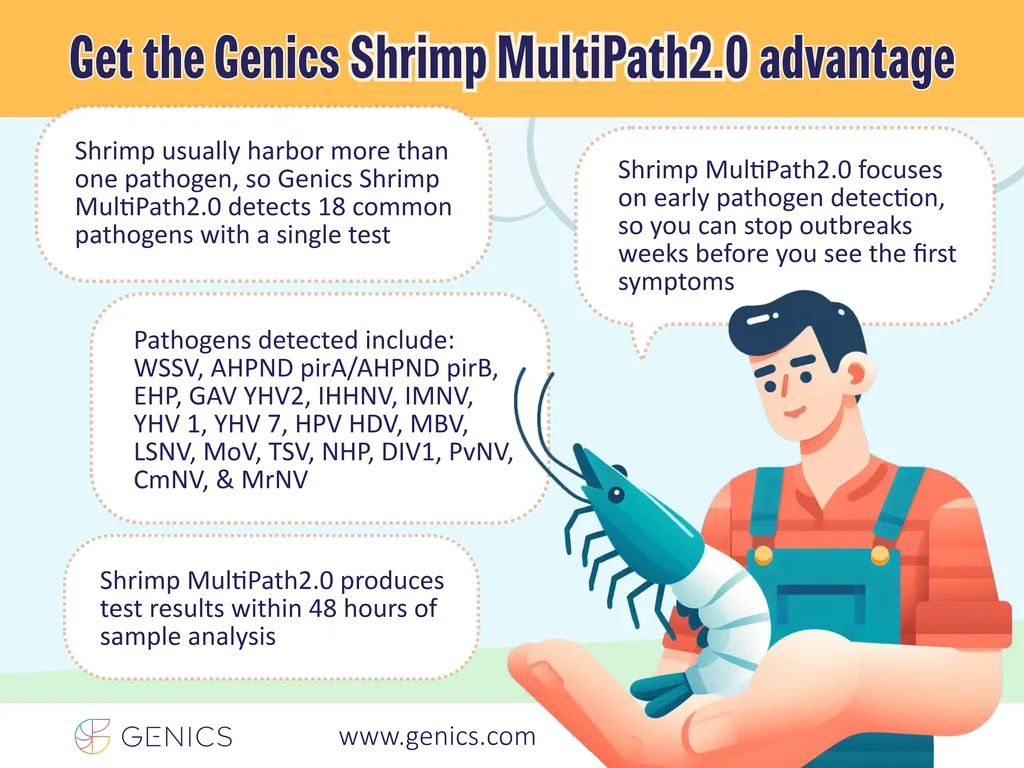In a significant stride towards bolstering the shrimp aquaculture industry, researchers have developed a groundbreaking method for the simultaneous detection of five major shrimp pathogens. This innovation, published in the esteemed journal *Applied and Environmental Microbiology* (translated from Chinese as *应用与环境微生物学*), promises to revolutionize disease management and biosecurity in shrimp farming.
The study, led by Haoyu Lou from the State Key Laboratory of Mariculture Biobreeding and Sustainable Goods at the Yellow Sea Fisheries Research Institute, introduces a quintuplex EvaGreen-based melting curve real-time PCR method. This advanced technique enables the detection of white spot syndrome virus (WSSV), infectious hypodermal and hematopoietic necrosis virus (IHHNV), decapod iridescent virus 1 (DIV1), acute hepatopancreatic necrosis disease (AHPND)-causing Vibrio (VAHPND), and Ecytonucleospora hepatopenaei (EHP) in a single test.
The implications for the shrimp industry are profound. “Rapid, accurate, and simultaneous detection of these pathogens is crucial for effective disease management and biosecurity in shrimp farming,” Lou emphasized. The method’s high specificity ensures that only the target pathogens are detected, while its sensitivity allows for the identification of pathogens at concentrations as low as 1.0 × 101 copies/μL. The repeatability of the method is equally impressive, with a coefficient of variation below 3.38% for each concentration gradient.
The diagnostic sensitivity (DSe) and diagnostic specificity (DSp) of the method were evaluated using 800 clinical samples gathered from shrimp farming regions in China. The results were promising, with a DSe above 89.74% for the five pathogens and a DSp of 100%. This high level of accuracy makes the method a valuable tool for early pathogen detection and disease control.
The commercial impact of this research cannot be overstated. Crustacean diseases pose a significant threat to the global shrimp industry, leading to substantial economic losses. By enabling early detection and effective management of these diseases, the quintuplex EvaGreen real-time PCR method can help mitigate disease outbreaks, improve shrimp farm productivity, and support the sustainable development of the aquaculture industry.
This innovative approach is poised to shape future developments in the field. As Lou noted, “This novel approach can help mitigate disease outbreaks, improve shrimp farm productivity, and support the sustainable development of the aquaculture industry.” The method’s accuracy, efficiency, and reliability make it a game-changer for the shrimp aquaculture industry, offering a powerful tool for disease management and biosecurity.
In conclusion, the development of this quintuplex EvaGreen-based melting curve real-time PCR method represents a significant advancement in the fight against shrimp pathogens. Its potential to transform disease management and biosecurity in shrimp farming underscores the importance of continued research and innovation in the field of aquaculture.

